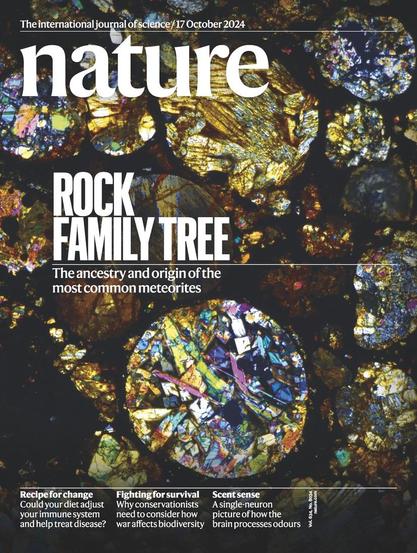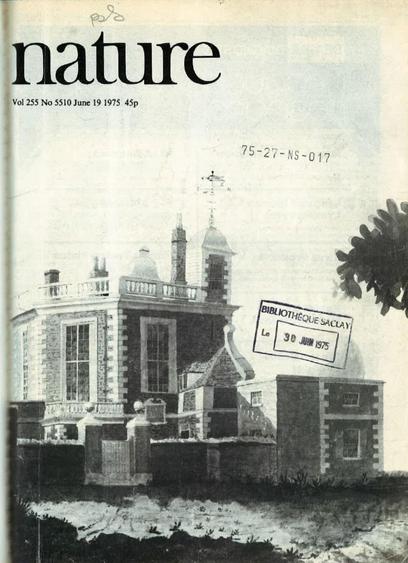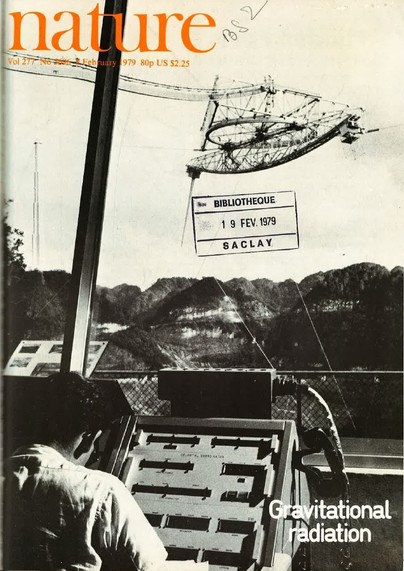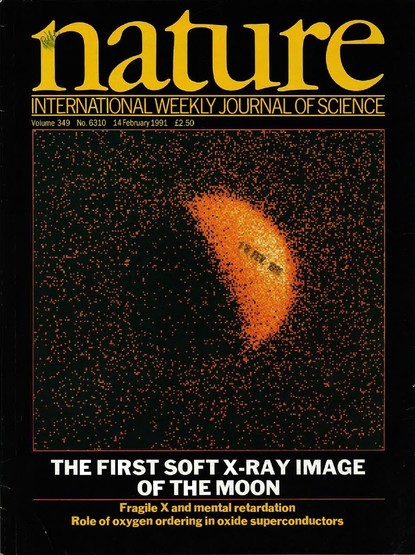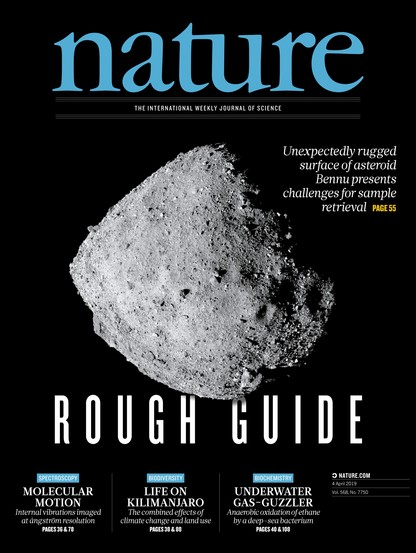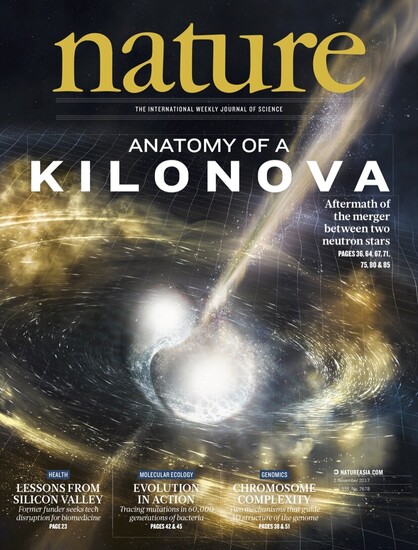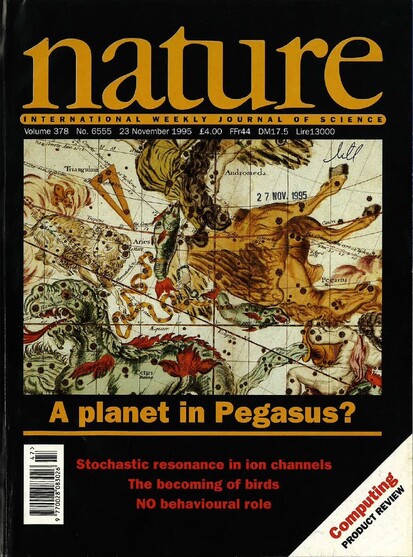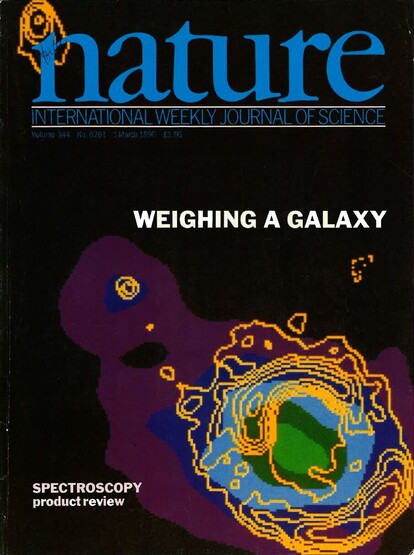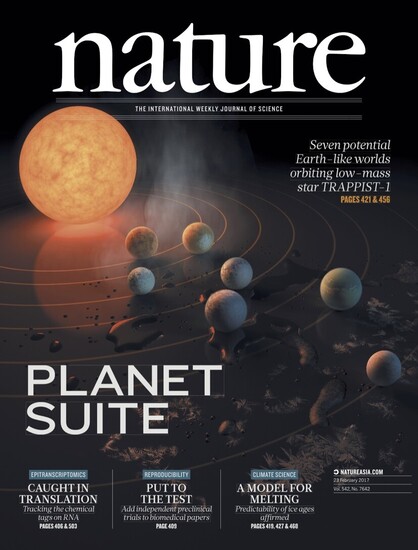Beautiful new cover of the Nature journal, for a paper on the ancestry and origin of meteorites
Featuring a cross-sectional view of the interior of a meteorite recovered from the Mackay Glacier icefields.
https://www.nature.com/nature/volumes/634/issues/8034
#meteorites #astronomy #astrophysics #astrodon #nature #cover #naturecover #covers #naturecovers #science #STEM #meteorite
Nature - Rock family tree
The cover shows a cross-sectional view of the interior of a meteorite recovered from the Mackay Glacier icefields during the 2005 field season of the...
Awesome 1979 cover of Nature featuring the giant Arecibo radiotelescope in Puerto Rico, with a busy operator in the control room in the foreground.
Feature paper by Taylor, Fowler, and McCulloch on general relativistic effects in binary pulsar PSR1913+16
https://nature.com/articles/27743
#Arecibo #radiotelescope #observatory #astronomy #astrophysics #astrodon #binary #pulsar #binarypulsar #pulsars #nature #cover #naturecover #covers #naturecovers #relativity #generalrelativity #physics #science #STEM
Here is a special Nature cover for the International #ObserveTheMoon Night!
The first soft X-ray image of the Moon, courtesy of reflected solar X-rays, captured by the ROSAT Satellite. The dark side of the Moon shadows a diffuse cosmic X-ray background.
https://www.nature.com/articles/349583a0
#moon #astronomy #astrophysics #astrodon #universe #space #science #research #nature #cover #naturecovers #rosat #satellite #xray
A soft X-ray image of the Moon - Nature
A soft X-ray image of the Moon obtained by the Röntgen Observatory Satellite ROSAT clearly shows a sunlit crescent, demonstrating that the Moon's X-ray luminosity arises from backscattering of solar X-rays. The Moon's optically dark side is also X-ray dark, and casts a distinct shadow on the diffuse cosmic X-ray background. Unexpectedly, the dark side seems to emit X-rays at a level about one per cent of that of the bright side; this emission very probably results from energetic solar-wind electrons striking the Moon's surface.
Nature Journal astronomy covers - 1993
Is there life on Earth?
Featuring a paper by Carl Sagan and co-authors on a search for life on the pale blue dot from the Galileo spacecraft, as a control experiment for the search for extraterrestrial life by interplanetary missions.
https://nature.com/articles/365715a0
#carlsagan #earth #palebluedot #life #galileo #spacecraft #nasa #universe #astronomy #astrophysics #space #science #research #nature #cover #naturecovers
Nature Journal astronomy covers - 1995
A planet in Pegasus?
The feature article reports the discovery of the 1st extrasolar planet orbiting a Sun-like star, 51 Pegasi, by Michel Mayor & Didier Queloz, a discovery that will earn them the Nobel Prize in 2019
https://nature.com/nature/volumes/378/issues/6555
#universe #astronomy #astrophysics #astrodon #51pegasi #planet #exoplanet #exoplanets #planethunting #nobel #prize #nobelprize #stars #nature #cover #art #coverart #covers #naturecovers #space #science #research
Nature Journal astronomy covers appreciation post
Weighing a Galaxy (1990)
Featuring the Einstein ring of MG1654+1346, a radio quasar in near-perfect alignment with a foreground elliptical galaxy, which acts as a gravitational lens.
https://nature.com/nature/volumes/344/issues/6261
#universe #galaxies #radio #quasar #einstein #ring #galaxy #galaxies #gravitation #gravitationallens #cosmology #astronomy #astrophysics #astrodon #nature #cover #covers #naturecovers #space #science #research
